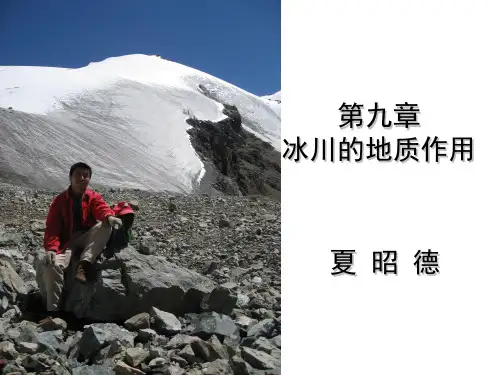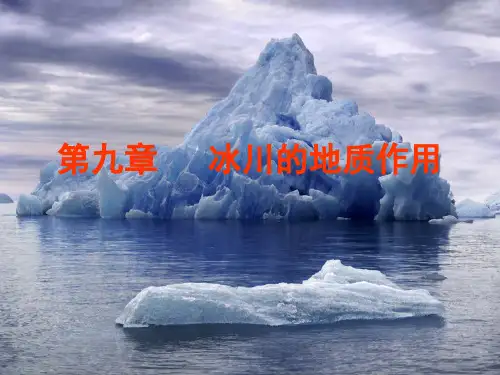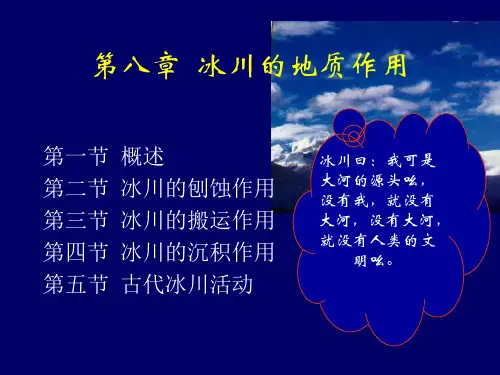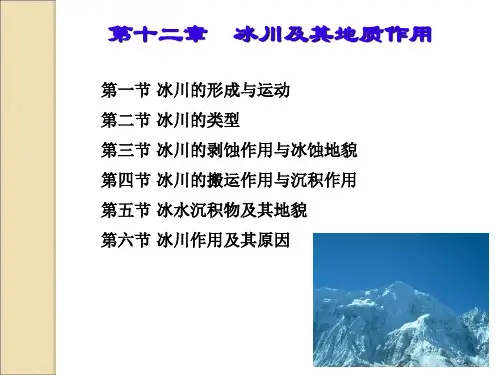普通地质学第九章冰川地质作用ppt
- 格式:ppt
- 大小:16.88 MB
- 文档页数:76









冰川地质作用冰川:是大陆上在重力作用下运动的冰体,是巨大的固体水流。
冰川主要分布在极地和中、低纬度的高山区,覆盖陆地面积10%,占全球淡水的85%。
是由大气固体降水经多年积累而成冰川形成的条件:1. 有丰富的降雪,降雪量>消融量,年平均气温0℃以下;2. 有适合冰雪大量堆积的场所(积雪盆地)。
终年积雪区称为雪原,其下限称为雪线。
雪线附近,降雪量=年消融量Image from /wikipedia/commons/8/8a/2008-06-27_01DSC_7583.jpg冰川的形成积雪粒雪化成冰雪的晶/wikipedia/commons/c/c2/SnowflakesWilsonBentley.jpgA snowflake's shape depends on the temperature at which it forms. This type of snowflake, called a sectored plate, forms when the temperate dips below about 5 degrees Fahrenheit (-15 degrees Celsius).Dendrite snowflakes first occur when the temperature hovers between 30 degrees Fahrenheit (-1 degree Celsius) and 27 degrees Fahrenheit (-3 degrees Celsius).Snowflakes take on the shape of hollow columns and needles at about 23 degrees Fahrenheit (-5 degree Celsius).Scientists aren't sure why temperature affects crystal formation and leads to different shapes of snowflakes.Snowflake Crystal冰川的形成/wiki/Firn/dutchs/graphic0/geomorph/longsect.gif根据气候、地形条件和冰川的形态规模,可将冰川划分为:1. 大陆冰川分布在高纬度和极地地区的冰川,又称冰盾或冰盖。

